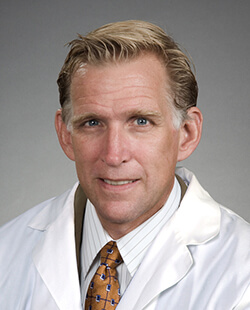 We sat down at the recent Venous Symposium meeting in New York City with Dr. Mark Meissner, who shared his thoughts on treating venous disease today and the trends he sees coming in the near future.
We sat down at the recent Venous Symposium meeting in New York City with Dr. Mark Meissner, who shared his thoughts on treating venous disease today and the trends he sees coming in the near future.
Dr. Meissner is a professor of surgery at the University of Washington. He specializes in vascular surgery, with particular clinical and research interests in deep vein thrombosis and chronic venous disease.
Q. What is the state of the practice in treating venous disease?
A. I think the biggest trend that I have seen in the last two years is the number of people willing to tackle very advanced venous disease, such as extensive ilio-caval venous occlusions. The use of advanced techniques, such as sharp recanalization and more aggressive approaches to recanalize the inferior vena cava, is becoming more widely adopted.
There is also a real need for dedicated venous stents. Much of my practice is salvaging cases that have been inadequately stented elsewhere – it is important to get the message out that physicians should probably not be using whatever arterial stents happen to be on the shelf.
There is also a great deal of interest in the interventional treatment of submassive pulmonary embolism. Unfortunately, I think there have been few appropriately designed trials to support this at the current time. There is a real need for appropriately conducted trials with meaningful endpoints.
Q. How will these trends affect the average physicians practice?
A. I think you are going to see an increasing dichotomy between physicians who have a relatively balanced practice – that is, who do 40-50 percent arterial work and 50-60 percent veins–and those who will focus on veins. As more techniques and tools become available, I do believe physicians will devote increasing amounts of their practice to venous disease. This is a trend we are currently seeing as more surgeons and interventional radiologists are moving toward full-time vein practices.
Q. Will we see people who are exclusively in either artery or vein specialization?
A. Yes, I think you will see that in the next 10-15 years.
Q. What resonates with you personally in the trends today?
A. First, all of the things that are going on in Europe with the venous stents are very exciting. And, second, I think we are still learning about the role of the newer anticoagulants.
Q What didn’t I ask you?
A. The field is really maturing a lot. Several years ago, meetings such as this would have focused almost exclusively on superficial veins and saphenous ablation. The level of knowledge and expertise of the physicians who come to these meetings has matured, so the topics have as well.